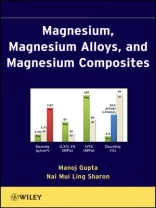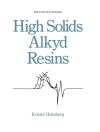A look at the current and future uses of magnesium-based products
and their role in the world’s environmental and technological
revolution
The lightest of all structural metals, having one-fourth the
density of steel and two-thirds that of aluminum, magnesium has
already been adopted as an alternative construction material in
applications as far ranging as automotive and sports equipment,
electronics, and space technology. In a world concerned with
minimizing the environmental impact of products, the choice of
light-weight, energy-saving, and high-performance materials, like
magnesium, would seem a small, significant step towards improving
life on this planet. Magnesium, Magnesium Alloys, and Magnesium
Composites introduces the science and current applications of this
important metal, shedding light on the magnesium-based composites
developed over the last fifteen years. Chapters include in-depth
discussion of:
* The characteristics of pure magnesium–including atomic
properties and crystal structure as well as physical, electrical,
and mechanical properties
* Magnesium alloys–and the effects of the alloying elements,
such as aluminum, lithium, copper, nickel, and silicon
* The properties of magnesium-based composites–and the
effects of different types (metallic, ceramic, interconnected, and
intermetallic) of reinforcements of varying length (from micron
scale to nanometric length)
* Corrosion aspects of magnesium-based materials
* Magnesium-based products in medicine, sports equipment, and the
automotive, aerospace, and electronics industries
Bringing together, for the first time, the science, properties,
and technologies relating to the current and future uses of
magnesium, this important reference also offers readers a glimpse
of a not-too-distant world in which environmental safety and sound
engineering are a reality.
Table of Content
PREFACE. ACKNOWLEDGMENTS. 1 INTRODUCTION TO MAGNESIUM. 1.1 Introduction. 1.2 Characteristics of Pure Magnesium. 1.3 Applications. 1.4 Summary. References. 2 SYNTHESIS TECHNIQUES FOR MAGNESIUM-BASED MATERIALS. 2.1 Introduction. 2.2 Liquid Phase Processes. 2.3 Solid Phase Process. 2.4 Disintegrated Melt Deposition Method. 2.5 Mechanical Disintegration and Deposition Method. 2.6 Summary. References. 3 MAGNESIUM ALLOYS. 3.1 Introduction. 3.2 Casting Alloys. 3.3 Wrought Alloys. 3.4 Magnesium Elektron Series Alloys. 3.5 Magnesium Alloys for Elevated Temperature Applications. 3.6 Magnesium-Based Bulk Metallic Glasses. References 81 4 FUNDAMENTALS OF METAL MATRIX COMPOSITES. 4.1 Introduction. 4.2 Materials. 4.3 Interface Between Matrix and Reinforcement. 4.4 Theoretical Prediction of Properties. 4.5 Summary. References. 5 MAGNESIUM COMPOSITES. 5.1 Introduction. 5.2 Materials. 5.3 Magnesium-Based Composites with Al2O3. 5.4 Magnesium-Based Composites with Mg O. 5.5 Magnesium-Based Composites with Si C. 5.6 Magnesium-Based Composites with Y2O3. 5.7 Magnesium-Based Composites with Zr O2. 5.8 Magnesium-Based Composites with CNT. 5.9 Magnesium-Based Composites with Metallic Additions. 5.10 Bimetal Mg/Al Macrocomposite. 6 CORROSION ASPECTS OF MAGNESIUM-BASED MATERIALS. 6.1 Introduction. 6.2 Types of Corrosion. 6.3 Influence of Impurity. 6.4 Corrosion Behavior of Magnesium-Based Materials. 6.5 Ways to Reduce Corrosion. 6.6 Summary. References. 7 STRENGTH-DUCTILITY COMBINATIONS OF MAGNESIUM-BASED MATERIALS. 7.1 0.2% Yield Strength < 100 MPa and Ductility Matrix. 7.2 0.2% Yield Strength 100-150 MPa and Ductility Matrix. 7.3 0.2% Yield Strength 150-200 MPa and Ductility Matrix. 7.4 0.2% Yield Strength 200-250 MPa and Ductility Matrix. 7.5 0.2% Yield Strength 250-300 MPa and Ductility Matrix. 7.6 0.2% Yield Strength > 300 MPa and Ductility Matrix. APPENDIX: LIST OF SOME MAGNESIUM SUPPLIERS. ABOUT THE AUTHORS. INDEX.
About the author
Manoj Gupta is an Associate Professor and head of the Materials Group of Mechanical Engineering at the National University of Singapore.
Nai Mui Ling Sharon was a research fellow in the Department of Mechanical Engineering at the National University of Singapore at the time she coauthored the book. Currently, she is an Assistant Research Scientist at the Singapore Institute of Manufacturing Technology (SIMTech).












